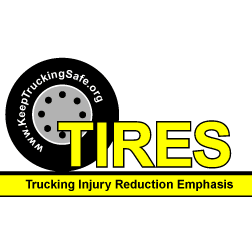The costs of workers’ compensation and other work injury expenses are significant and difficult to predict. To manage this risk, businesses should build safety culture by implementing work injury prevention programs and providing incentives to employees that promote safety across the organization. For an overview on how to make the case for work safety policy, review our Work Injury Prevention Infographic.
Tag: Work Injury Prevention
The Cost of Work Injuries: Direct, Indirect, and Hidden
A worker injury comes packaged with costs far beyond worker’s compensation claims and potential litigation expenses. Direct costs are significant; In 2009, worker’s compensation benefits paid totaled $58 billion, a 150% increase from only 6 years prior. Yet, considering direct costs alone when factoring a return on safety investment or justifying safety and health initiatives is painfully incomplete. Companies that have dealt with even minor worker injuries have experienced the hidden costs and indirect bottom line factors that can lead to catastrophic side effects or unanticipated benefits. Studies have shown that work injury prevention programs are effective both on a bureaucratic and a business level. Considering the complete picture of a work injury can be the most effective motivator for investing in safety risk management programs.
Hidden Costs of Work Injuries
The worst case scenario for a work injury, a death or debilitating injury, carries the most hidden costs for a business organization. Large workers’ comp claims hike up premiums and can even lead to inability to change or acquire insurance. From here, consider the effect on the co-worker when an employee suffers an injury on the job. In the worst case, counseling may be required for co-workers, as the work facility becomes a haunting reminder of the incident. Lack of sensitivity to this scenario can lead to worker absenteeism and forge foundational cracks in the management-employee bond. Injuries don’t have to be major to carry hidden costs, however. Companies with a reputation for aloofness to safety, experience a large number of worker injuries, or fail to support national and economic safety initiatives can have a hard time retaining and hiring employee at competitive salary levels.
Indirect Costs of Work Injuries
The indirect costs of a work injury are more easily foreseeable but still difficult to factor in monetary terms. It is important to realize their reach to fully anticipate the event of a work injury, even if the variability of the costs makes them difficult to forecast. Indirect costs can include training and compensating replacement workers, damaged property, production delays, administrative expense, and morale and reputation factors. These side effects and reactionary costs can add up to total up to 20 times the direct costs and are usually considered as a multiple factor in projections.
Indirect Safety Benefit & Opportunity Cost
Remember the hidden costs of a work injury? Hidden benefits are just as closely tied to safety initiatives. Safety programs are beneficial for the business, the worker, and the economy as a whole. A 2001 Liberty Mutual report on Safety Investment ROI shows that 61% of executives see a 3-1 return for safety investments, likely due to improved morale, productivity, industry reputation, community support, and HR advantages. Safety can be a core business value and produce competitive advantage as a positive safety reputation becomes recognized by customers, vendors, and staff. It doesn’t have to be though. An attentive and effective safety program can economically support strategies ranging from quality to customer service, while still producing indirect benefit. Ignoring this agenda for lower return investments is often an opportunity cost for businesses.
When a complete picture of work injuries and safety benefit is considered, it’s easier to see the wisdom in investing in injury prevention and championing proactive safety programs.
Creating Safety Culture as a Brand
Safety culture compared to safety policy is similar to the difference between creating a brand and pitching a service. Putting in place a safety and health program can and will be effective, but motivational factors can seem like a burden to managers and employees.
Creating safety culture will align executive initiatives with employee investment and organizational commitment to create value across operational activities. As a result, effective safety culture not only reduces hazards, injuries, and related costs, it can also provide reputation advantages that improve employee recruiting, generate sales opportunities, and build morale-based quality and efficiency.
Core Elements of Safety Culture
Culture is a small word with a large connotation. Just how to implement culture is a concept that is a challenge to grasp when managing business objectives. The first step in implementing safety culture is to understand and build upon cultural principles.
Commit to Safety as a Value
Management staff as a rule is subject to shifting priorities and objectives. To build culture, safety should be considered as a value throughout the decision making process: considering new initiatives, managing day to day activities, reviewing performance, and everywhere in between. As employees hear safety consistently discussed as a value, they will understand it is not a shifting objective and more actively support initiatives.
Employee Involvement in Decision Making
Culture is the driving force for decision making in business, from leadership to management, operational employees, sales and support staff. Well known cultural values include quality, service, and efficiency. As values effect each member of an organization on a continual basis, each employee should be involved in planning cultural systems that affect them. By providing employees with objectives and focus areas, management will understand key factors and produce safety systems that employees support.
Cross-Departmental Investment
Values such as quality, service, and efficiency are often driven by incentives across the organization, from executives to managers and staff. Safety as a value can be rewarded in the same way. Safety culture should encourage communication across departments, reward performance at all levels, and include cross departmental activities.
To Support Culture, Create Systems
Once you begin to embrace safety as a culture, you will soon identify the need to create systems for consistency, management, and performance review. Effective systems will build trust and focus on correcting unsafe practices, generally improving the environment for safety discussions. Systems will also provide management with a process for hazard identification, injury prevention training, incident reporting, and continuing improvement.
The importance of safety to businesses of all sizes is proven to reduce work injuries and related costs, but implementing safety initiatives at optimal benefit is not always easy. Integrating safety as a cultural value will build motivation across the organization and encourage cooperative discussion. For more on safety culture, visit OSHA.gov.
SHARP Program Emphasizes Work Injury Prevention in the Trucking Industry
In Washington and across the country, the SHARP program is helping to bring awareness to trucking industry work injury risks, via the TIRES (Trucking Injury Reduction Emphasis) initiative. SHARP (Safety & Health Assessment and Research for Prevention) is an established Washington State Department of Labor & Industries program focused on research and response to occupational safety and health issues across industries and disciplines.
With additional support from NIOSH, the TIRES program maintains a website and social media presence, provides training materials and reports, and conducts interviews and surveys with members of management and labor teams in industry.
The goal of the TIRES project is to reduce the incidence of:
- Non-traumatic musculoskeletal disorders of the neck, back and upper extremity.
- Slips, trips and falls.
- Injuries from getting struck by or against an object.
These conditions comprise 71% of the industry’s workers’ compensation claims, costs and lost workdays.
The trucking work injury prevention resources available at the TIRES website is a smorgasbord for safety professionals and industry members across the country. The Washington Department of Labor & Industries also conveniently ties together reports and publications in an encyclopedia-like layout that provides everything you need to develop safety programs, research risk areas, and gather case studies for reporting.
To stay up to date, follow @TruckSafe on Twitter or visit the TIRES blog. And as always, upgrade your trucking fall protection with a trucker ladder or flatbed work platform from Innovative Access Solutions.
Work Injury Prevention Programs
Injury prevention programs have led to a significant reduction in workplace injuries while contributing to improved productivity, reduced turnover, improved OSHA compliance, reduced worker’s compensation claims and premium rates, and higher employee satisfaction. The costs of a worker injury can be devastating to individuals families and affect businesses on multiple fronts. In 2009, worker’s compensation benefits paid totaled $58 billion, and indirect costs have been estimated at 1.1 to 4.5 times the direct cost.
Indirect Costs of Worker Injury
- Wages paid to absent, injured workers
- Time lost due to work stoppage following injury
- Administrative time processing injury-related tasks
- Employee training and replacement following an injury
- Productivity loss due to new employee training
- Replacement cost for damaged material and equipment
Source: OSHA Injury and Illness Prevention Programs
Injury Prevention Programs: Effective and Scalable
As of 2012, 34 states, and countries around the world, have instituted required or incentivized injury prevention programs. The results of state programs are remarkable; work injury rates have been reduced by as much as 60 percent. Participating businesses have reported additional benefits and some have even encountered more sales opportunities due to their commitment to safety.
Despite the evidence, many businesses are slow to adopt injury prevention programs. The perception that implementation will be costly and burdensome, particularly for small businesses, can be difficult to overcome. The reality has been quite the opposite. Injury prevention programs are scalable when business owners focus on basic tenets: leadership, participation, hazard identification and prevention, training, and continuing improvement. The effect on the bottom line is also a positive, due not only to reduced workers compensation premiums and payouts, but also indirect morale, productivity, company image, and process improvements.
Mandatory Policy or Incentivized Benefit?
In a 2012 OSHA white paper, the effect of state programs was reviewed and the results are of interest to businesses considering an injury prevention program. Incentivized programs in Colorado, Massachusetts and North Dakota resulted in noticeably higher effectiveness compared to mandatory programs in other states. By providing a worker’s compensation premium reduction incentive, states reduced work injury by at least 20%, compared to mandatory programs with 10-20% reductions.
In addition to the basic principals of injury prevention and company-wide safety commitment, these results may be a factor to consider for businesses seeking to maximize the effect of injury prevention programs. Employees who believe their management team cares about safety risks are more motivated, aware, and productive, leading to advantages above and beyond cost benefit. Anyone who has held a management position knows that while blunt force may get the job done, it often comes with costs ranging from employee resentment to undermining the system.
Incentivize to Promote Safety Culture Investment
Incentivized programs may help to avoid unintended indirect costs while still reaping the benefits. By incentivizing safety initiatives, employees are more likely to perceive safety as a culture as opposed to a business owner’s cost saving agenda. Further, incentives will help to communicate safety as a company value with a higher purpose than simply complying to policy. Providing incentives for safety could be based on Key Performance Indicators constructed from hazard assessment initiatives and include cost savings sharing. Employees that are motivated by incentives will perceive safety not as a management priority but as a mutually beneficial investment.
![Making the Case for Work Injury Prevention [INFOGRAPHIC]](http://snblog.preview.yellowberri.com/wp-content/uploads/2013/07/Work-Injury-Analysis-SQUARE_July2013.png)

